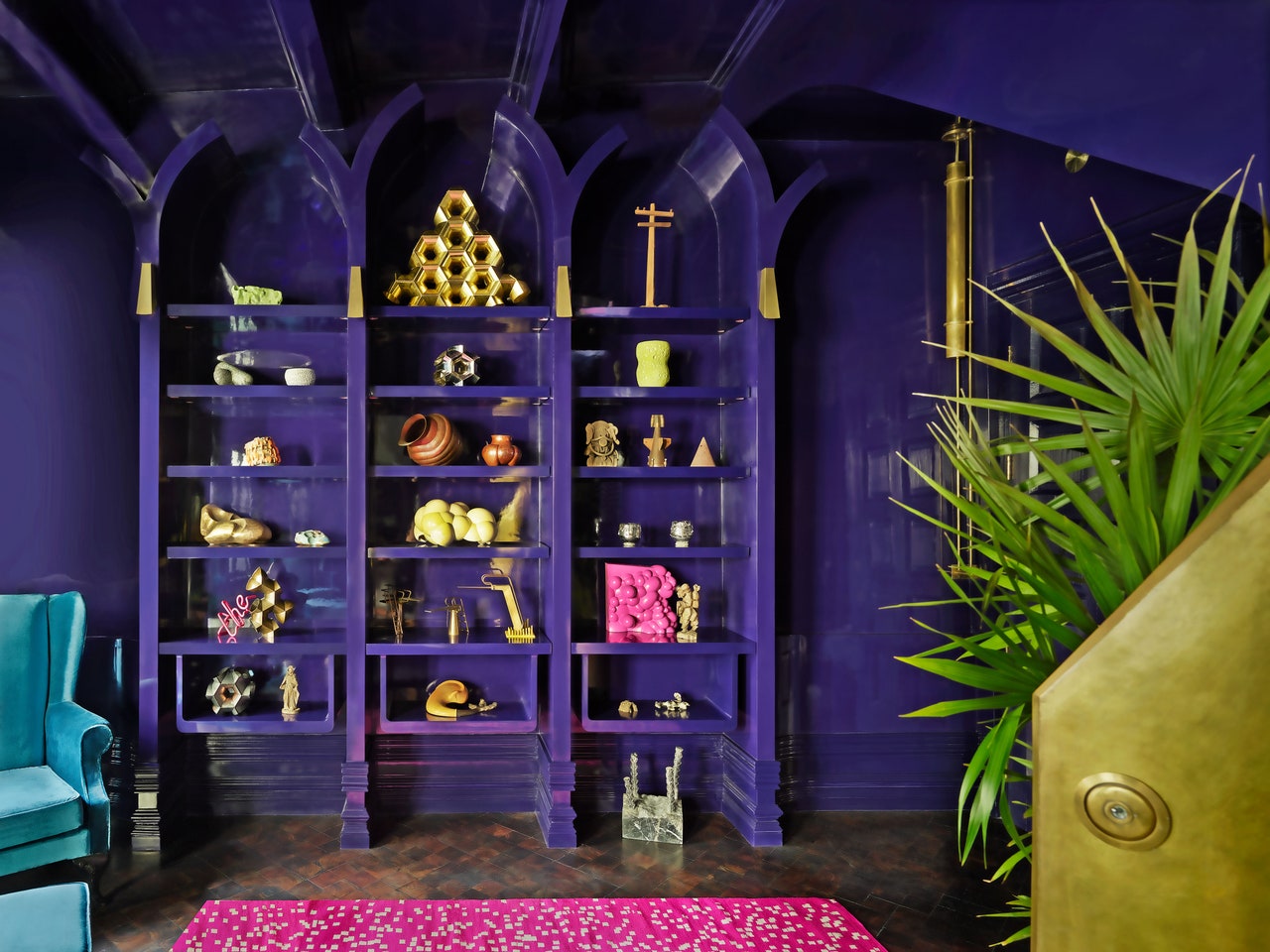Inside a Mexico City Apartment That’s an Avant-Garde Marvel
There’s an element of spectacle and obsession, perhaps even a bit of madness, in the work of Astrid and Eddy Sykes, founders of the multidisciplinary Mexico City–based firm wrinkleMX. Tucked discreetly behind the historical façade of an early-20th-century building on the outskirts of the Mexican capital, the duplex apartment that the designers crafted for a young family is a tour de force of materials exploration and sculptural brio, astonishing and completely sui generis. The kitchen alone, with its folded planes of brass and a marble island that reads like a Mayan sacrificial altar, is worthy of a dissertation on eccentricity, experiential design, and structural derring-do.
In short, there’s nothing quite like it.
“It took us three months just to make the dish rack. We obsess over everything that people touch, how they engage with a space and the objects that fill it. This is our passion,” Astrid says. Eddy underscores the philosophical imperative that propels the firm’s far-flung experiments: “We work micro to macro, starting with how someone enters a room, the doorknob and the light switch, where they plug in their iPhone. We focus on points of contact, places where questions of ergonomics and tactile experience present opportunities to create something extraordinary,” he explains.
The couple’s individual résumés hint at the genesis of their decidedly unconventional approach. Trained as an architect, Eddy branched out into engineering, working for a company that developed high-tech systems for aerospace and military applications, as well as custom projects for architects and designers on the order of Rem Koolhaas, David Chipperfield, Diller Scofidio + Renfro, and Rick Owens. His personal investigations into form, material, and technology have yielded a plethora of mad-scientist concoctions, notably his Yakuza Lou series of mechanized, origami-like chandeliers. Astrid received a master’s degree in architecture in Paris before decamping to UC Berkeley for another one in landscape architecture. She spent a decade working for Los Angeles landscape maestro Mia Lehrer at Studio-MLA, contributing to major public commissions such as the Lucas Museum of Narrative Art, the Holocaust Museum LA, and Ishihara Park in Santa Monica.
After moving from L.A. to Mexico City three years ago, the duo launched wrinkleMX as a hybrid architecture, design, landscape, and custom-fabrication practice. The firm’s big break came in the form of an open-ended assignment to reimagine an urban pied-à-terre for a couple with two young children. “Their entire brief and inspiration board was one photo of the Peacock Room,” Eddy recalls, referring to the Aesthetic Movement salon crafted by Thomas Jeckyll and James McNeill Whistler, which was built in London and subsequently relocated to the Freer Gallery of Art in Washington, D.C. “We knew they wanted something different, something special, but they essentially left it up to us to decide what that meant,” Astrid elaborates.
Over the next two years, the Sykeses embraced the challenge with gusto, conjuring a series of spectacular, interconnected coups de théâtre of decorative art and architecture. The focal kitchen on the upper floor gathers strength from four compelling design elements: an island of pieced Tikal green marble from Guatemala, with a topographical mountain range separating the cooking surface from the counter; an elongated architectonic sink of coarse travertine; a bravura ceiling of folded brass planes that cascades down into a wall of faceted brass pantry doors; and a floor of swirled tiles of colored concrete and marble dust, designed in collaboration with Pablo Kobayashi and handmade on-site. “The various pieces speak their own design languages, but they remain in conversation with one another and with the users of the space,” Eddy observes.



